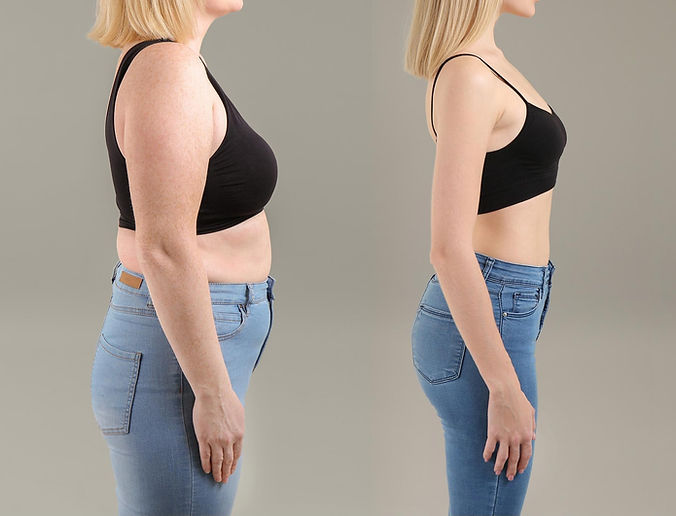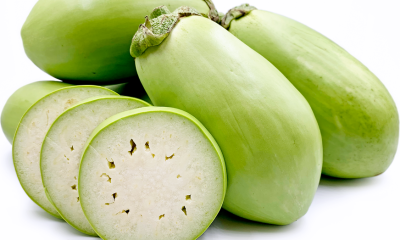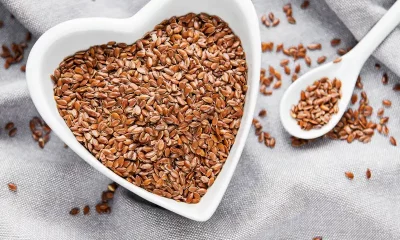Health
Gluten-Free Diet: benefits, recommendations, care and more

Discover the Gluten-Free Diet: benefits, recommendations, care and more.
Gluten is a protein found in wheat and other grains, and therefore it spreads in bread, pasta, conventional flour, semolina, cakes, etc.
For people who have difficulty digesting it (gluten intolerance or celiac disease), it is essential to adopt a gluten-free diet , as the absorption of gluten causes significant digestive disorders.
But in recent years, the gluten-free diet has started to be adopted by people who do not tolerate gluten, due to the health benefits it provides.
Going gluten-free is an important dietary option for many people and can provide many health benefits, such as reduced inflammation, a smoother digestive process, increased energy, clear skin, hair protection, and regulated hormones, among others.
Gluten free diet
The term gluten-free has become a buzzword in recent years and is even considered a fad diet, but there are many misconceptions that need to be understood before jumping into the world of being gluten-free.
For starters, gluten is a type of protein found in wheat, rye, and barley.
However, due to its usefulness as a binding agent and relatively low cost, you can find gluten in many surprising places, such as pickles, sushi, curry powder, hot dogs, and licorice.
Pick up a random food package at the grocery store, and there’s a chance it might contain gluten.
Obviously, completely eliminating gluten from your diet is therefore a challenge, although, in the last decade, gluten-free options have increased exponentially.
Now, the gluten-free diet has come into the spotlight due to increased awareness and diagnosis of celiac disease across the country (and the world), and the understanding that not all chronic stomach concerns can be quickly label IBS (Irritable Bowel Syndrome).
Celiac disease, by definition, is a genetic autoimmune disorder.
When a person with celiac disease consumes gluten, the body identifies the protein as a foreign or dangerous substance, causing an immune response in the small intestine.
This immune response can seriously damage the small villi in the small intestine that are essential for the digestion of food and the absorption of nutrients.
Additionally, the immune response causes vomiting, nausea, fatigue, bloating, weight loss, ADHD, irritability, irritation and rashes, growth retardation, joint pain, depression, and dozens of other symptoms.
Up to 1 in 100 people are believed to have celiac disease, but the diagnosis is still rare.
About 2.5 million people are believed to have undiagnosed celiac disease in the United States alone.
In addition to celiac disease, there are also wheat allergies (1 in 1,000) and gluten sensitivity as reasons to eliminate or greatly reduce the amount of gluten that is included in your diet.
What further complicates this is that many people show no definite or severe symptoms of the disease, but their small intestine is still damaged, sometimes for years.
It may only manifest itself in small ways, like chronic fatigue or eczema, but it won’t become a more obvious health problem for years or even decades.
However, the damage is still being done.
After eliminating gluten from your diet, symptoms can often clear up in a matter of weeks, but damage to your digestive system can take years to fully heal.
The gluten-free trend
With the massive boom in the gluten-free food industry, initially driven by people needing to eliminate gluten, this eating style has also become “trendy” and “popular,” causing many people to try the diet, believing that it can be a healthier option, like cutting carbs.
However, the nutrients found in wheat, rye, and barley are incredibly important to human health.
Whole grains can help with everything from heart health and diabetes to obesity and cancer.
Gluten itself is related to strengthening immune function and maintaining the balance of the intestinal flora.
Doctors encourage people with gluten sensitivity to “taste” gluten again once a year to see if the sensitivity has decreased, due to the benefits that whole grains have on the body.
In other words, if you are not in the approximately 2% of the population that may suffer from celiac disease, wheat allergy, or gluten sensitivity, eliminating gluten from your diet can have a negative effect on your diet.
Also, if you cut down on your gluten for “modern” reasons, but you actually have celiac disease, it will be much more difficult to diagnose.
The small amount of gluten you consume will continue to damage your intestines over time, even if you aren’t seeing other serious symptoms.
With that said, for those with celiac disease, a wheat allergy, or a gluten sensitivity, there are many health benefits to going on a gluten-free diet!
Health benefits of Gluten-free diet
The health benefits of a gluten-free diet include:
1.- Reduces inflammation
By eliminating gluten, you can prevent the immune response from inflaming the tissues of the small intestine, which can quickly eliminate the more immediate symptoms of celiac disease, such as vomiting or diarrhea.
This inflammation will also mean less cramping and bloating.
2.- Improves digestion
The small intestine is a critical part of human health, as we absorb many critical nutrients in this part of the digestive tract.
Eliminating gluten will protect the villi, ensuring that they can absorb all the nutrients that are available in our diets.
3.- Increase energy
Chronic fatigue is one of the most common complaints from people with gluten intolerance or celiac disease, so cutting out gluten can give you an energy blast.
The gut is a key to overall health, so ensuring you’re in good shape has effects in many other areas.
4.- Skin protection
Rashes, psoriasis, and eczema are seen at higher frequencies in people without a diagnosis of celiac disease.
So if you eliminate gluten under this condition, you can enjoy clear skin that does not itch or discolor when you eat certain foods.
5.- Hair care
One of the long-term effects of gluten attacking the body’s small intestine is nutrient deficiencies.
The body will protect its vital functions, but things like hair growth and health are often secondary, and premature hair loss is common in undiagnosed celiac patients.
Keep your luscious locks in place by cutting out the gluten.
6.- Better immune function
More than 50% of the immune function in our body occurs in the intestine, and when there is chaos in the small intestine, the balance of the flora of bacteria is severely compromised.
This can weaken the overall immune system and lead to chronic illness, so getting rid of gluten is a good idea.
7.- Regulates hormonal levels
Women who suffer from celiac disease or gluten sensitivity often experience menstrual irregularities, often miss periods or are very severe.
By being gluten-free, the immune system can behave properly and prevent imbalance in hormone levels, providing significant relief for many women.
8.- Reduce stress
High levels of anxiety and depression are frequently seen in gluten or wheat intolerant patients.
So if you want to get a good night’s sleep and decrease irritability, cutting out or completely eliminating gluten could be the solution you are looking for.
Final word of warning: If you think you have celiac disease, are gluten sensitive, or have a wheat allergy, talk to your doctor or allergy specialist and get tested, rather than just jumping in the bandwagon and cutting out all the foods in it.
Gluten from your diet. For those people who don’t have all three of these conditions, a gluten-free diet is not only unnecessary but can be dangerous to your health!
Risks of a gluten-free diet
For many, reducing or eliminating it can even lead to weight gain, as most gluten-containing food alternatives are higher in fat.
Also, the gluten-free diet can lead to deficiencies in the essential elements that you will need to get.
The most common deficiencies in the gluten-free diet are:
• B12 vitamin
• folate
• iron
• zinc
• magnesium
• calcium
You can anticipate and find out which foods will help you fill this gap or you can use our vitamin supplements
Of course , some do lose weight, but this is mainly due to the fact that becoming “gluten-free” offers you a smaller variety of foods and therefore reduces your daily caloric intake.
However, whole grains are part of a healthy and balanced diet, and eliminating gluten if you do not have the real need, you lose many nutritional benefits of this type of food (vitamin B, minerals, etc …).
Start a gluten-free diet?
To start, you should focus on maximum consumption of raw / unprocessed foods, such as fruits, vegetables, chicken, fish, and lean meats (all gluten-free).
This is a good way to rule out all sources of gluten in your diet.
Add in that in everyday life, going to the restaurant or going out to eat can quickly get complicated when you are on a gluten-free diet…
So it would be smarter to contact establishments in advance to find out if the menu offers gluten-free options.
Also, do not forget to always inform your server about your sensitivity to gluten, or about your various allergies, as they are used to it and will be happy to help you.
Beware of hidden gluten!
Eating industrial and refined foods is not recommended because gluten can be disguised and not explicitly listed as an ingredient.
However, today most stores have a section dedicated exclusively to gluten-free products
Products that generally contain gluten:
• Bread
• Pasta
• Flour in general
• Matzo
• Pita bread
• Couscous
• The cakes
• Muffins
• Cookies
• Cakes and pastries
• The wheat
• Barley
• Sound
• Semolina ;
• Oatmeal (which contains a protein that is very similar to gluten but not quite the same)
Also note that many oat and field products will be cross-contaminated, so if you decide to buy oats be sure to buy from a certified gluten-free brand).
What are gluten-free foods?
Excluding gluten from your animation means excluding certain foods from your gluten-free diet…
But fortunately, there are still many gluten-free alternatives for foods like cereals and baked goods, as well as many fresh foods that can replace those that contain gluten.
•fruits:
Apples, oranges, grapes, bananas, pears … etc.
•Vegetables:
Potatoes, corn, broccoli, cauliflower, zucchini, cabbage, lettuce, etc.
•Sauces and spices:
Ketchup, Mayonnaise, Salt, and Pepper – Be wary of soy sauce and general salad dressings that may contain gluten!
•Raw, fresh and unprocessed meat.
Chicken, beef, pork, fish, eggs, etc.
Pay attention to hot dogs, cured meats, and any seasoned / prepared meats as they may contain gluten.
•The milk products:
Milk, cheese, yogurt, butter, cottage cheese …
Pay attention to processed cheeses and blue cheese that may contain gluten in this loaf pan. Also, always check the labels on yogurts, making sure there are no added fiber or grains.
•accompaniments:
Rice, potatoes, beans, quinoa … and avoid instant puree!
•Nuts and Spreads:
Peanut butter, almond butter, pistachios, cashews, peanuts… and avoid all roasted, salty and flavored nuts…
Health
10 Benefits of charcoal soap and side effects

Table of Contents
Health
10 Benefits of long bell peppers

Discover the 10 health benefits of long bell peppers.
The long peppers may sound unfamiliar to some, but not in the ears of the Javanese. In Java, it is also known as Javanese pepper, with the scientific name of Piper Retrofractum Vahl.
It is considered as a spice and is commonly used for jamu, which is an Indonesian traditional herbal drink, hence its nickname is “cabe jamu” or jamu pepper.
If you want to learn more about long peppers, you are absolutely on the right track! For your information, long peppers grow at a maximum altitude of 600 m with 1,259 mm/year of rain. Anyway, what exactly is a long pepper?
Long peppers are also known as Balinese pepper or Indian pepper, following their original roots in South Asia, particularly India and Sri Lanka.
In India, long peppers are called ‘pippali’. Long peppers have four main functions, especially as a home remedy, cooking ingredient, medicinal herb, and catalyst to enhance the effects of other herbs.
The benefits of Javanese long peppers are somewhat similar to the health benefits of Indian long peppers.
Just as their scientific name suggests, long peppers contain piperine. Piperine is an alkaloid that works as a stimulant for poor blood circulation. Piperine is also found in black pepper and is also responsible for making both of them spicy.
Now here is the main question; Do long peppers have other uses besides being spices and a cooking ingredient? Yes, it does, and here are the health benefits of long pepper.
10 health benefits of long bell peppers
1.- Good for liver ailments
• Liver disease arises from our habit of indulging in unhealthy junk foods.
• At the end of the day, the liver becomes overworked.
• Long bell peppers balance the liver’s workload by removing toxins that have built up in the liver and that have been produced by digesting these types of foods.
• Here are also the best quick way to detox the liver after several years of drinking.
2.- Helps to lose weight
• The long pepper can burn fatty acids similar to other types of pepper without any side effects.
• In fact, it is considered a safer and healthier alternative compared to its clinical counterparts.
3.- Reduces the risk of diabetes
• Like the health benefits of red rice for diabetics, long bell peppers help alleviate diabetes by regulating the rate of glucose released into the blood system.
• Long peppers also stimulate insulin production.
• That is the main reason why long pepper is highly recommended for diabetic patients.
4.- Decreases bacterial infection
• The risk of bacterial infection may incline as the daily temperature increases.
• Unhygienic food, as well as unsterile water, can be prone to bacterial infection, causing an upset stomach.
• Long peppers can be used to counter these occurrences.
5.- Serves as a cough treatment
Long peppers treat a cough by making it a simple remedy. This is how you do it:
Step 1: Take 1 to 2 grams of the spice and fry it with a little ghee. Ghee is a kind of Indian butter.
Step 2: Bring it in while it cools.
If ghee is not available, you can use honey instead.
6.- Relieves indigestion
• The content of long peppers is capable of curing digestive problems.
7.- Decrease fever
• The antiseptic and antiseptic properties of long pepper can reduce fever or relax the throat.
• You can easily reduce a fever by mixing long pepper with a hot bowl of soup.
8.- Relieves toothache
• You can also cure a toothache by making a paste with pepper, salt, and water.
9.- Cure diarrhea
• Diarrhea can be cured by consuming a long pepper soup.
10.- Relieves asthma
• Long peppers are an alternative to relieve occasional asthma attacks and other asthma symptoms.
• However, you should not use it as a substitute for respiratory medicine.
How to use long peppers for traditional cures
About the previous pointers on the health benefits of long pepper, here are the simple recipes to make your long pepper remedy.
1.- To lower the fever
• Step 1 – Prepare 3g of dried long peppers
• Step 2 – Smooth until it reaches its softest state.
• Step 3: Infuse with hot water and consume.
• Despite its hot taste, it is suitable for both children and adults.
2.- It is a cure for toothache
• Step 1 – Prepare 3 long pepper leaves
• Step 2: squash them, but not to their smoothest shape.
• Step 3: prepare it in warm water
• Step 4: Use the gargle formula. Do it regularly until the toothache is completely gone.
3.- To overcome «Masuk Angin»
Masuk angin is an Indonesian term to describe the uneven distribution of gases within the body characterized by cold-like symptoms.
It has no direct translation into English, and no specific knowledge of this ‘disease’, therefore making ‘masuk angin’ is a large loose term. Long peppers can be treated ‘masuk angin’ by following this simple formula:
• Step 1 – Prepare 3g of long peppers, some brown sugar, ginger, and “temulawak” (Curcuma Zanthorrhiza).
• Step 2 – Boil until everything is softened and add warm water.
• Step 3 – Drink that formula while it’s still hot.
4.- Prevents abdominal spasm
• Step 1: Take 3 long pepper leaves and add a glass of water.
• Step 2: Boil both of them fully and let them cool for a while.
• Step 3: consume completely.
5.- Clean the postpartum ovary
• Step 1: Prepare 3 grams of long pepper roots.
• Step 2: Add warm water and bring to a full boil.
• Step 3 – Filter the water when you are done.
• Step 4: Consume the boiled water until done. It is suggested to consume it while it is still hot.
Those are just the healthy creations you can make with long bell peppers. The recipes are not proprietary so you can easily adjust them to better suit your preferences or requirements.
However, it is still highly recommended that you follow exactly what is written above. In addition to the long bell pepper uses listed above, there will be more below, however, the ones below are not specifically categorized by disease.
Generic long pepper recipe
Step 1 – Boil 150cc of water.
• Step 2 – Make it with 4 grams of pepper powder.
• Step 3: Consume while hot to get your maximum benefit.
If there are still long pepper powders left, you can also use them like this:
• Fill it inside the capsules for consumption at any time.
• Apply the powders directly to the affected area for toothache.
• Use it to treat swollen gums.
• In addition to health, long peppers are equally useful for planting and soil fertility.
• Thirty-eight uses of long peppers can be obtained by using them in a “jamu” or a traditional herbal drink, which has the potential to cure practically everything but the insecticide.
• Long pepper does not work with insecticide because it kills the reaction of the insecticide inside the plants.
Those are just the top long pepper health benefits that may sound unfamiliar to you, especially among the youngest these days. Either way, hope it helps!
Health
Ozempic for weight loss

Table of Contents
-

 Food1 year ago
Food1 year ago10 + Benefits of carrot juice and side effects
-

 Health11 months ago
Health11 months ago50 Super Healthy (And Very Often Cheap) Foods
-

 Health1 year ago
Health1 year ago5 Shocking health benefits of kinkeliba and side effects
-

 Food1 year ago
Food1 year ago8 shocking benefits of leek juice and side effects
-

 Health1 year ago
Health1 year agoBenefits of guava leaves Sensually
-

 Weight Loss1 year ago
Weight Loss1 year agoChaz Bono weight loss secret
-

 Health1 year ago
Health1 year ago13 shocking health benefits of Thai eggplant
-

 Food11 months ago
Food11 months ago19 Benefits of tobacco plant and side effects












